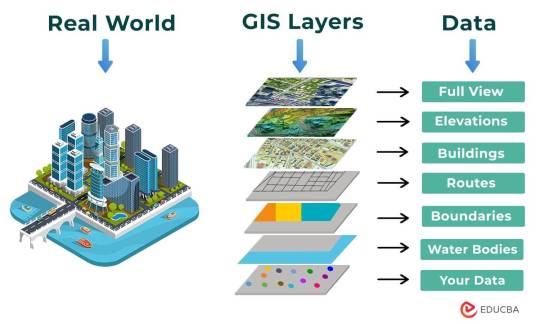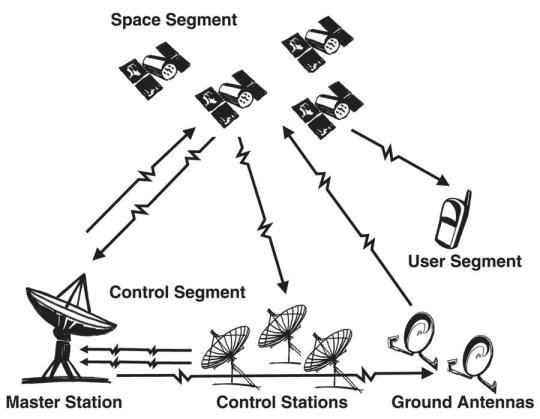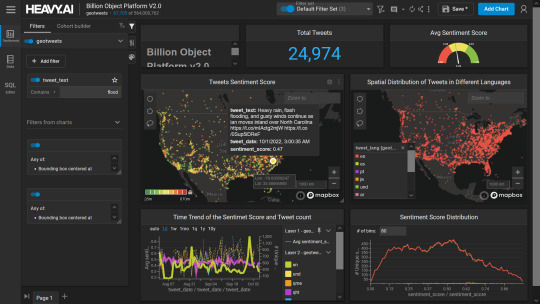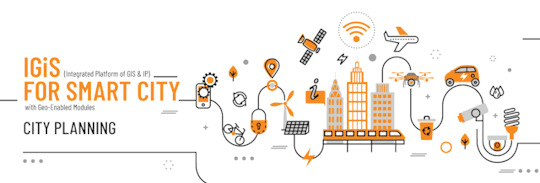#transport monitoring and management software
Text
Streamlining Operations: Transport Monitoring and Management Software
In today’s fast-paced world, businesses rely on efficient transportation systems to deliver goods, services, and people to their destinations reliably and cost-effectively. Transport monitoring and management software have emerged as indispensable tools for businesses seeking to optimize their transportation operations, improve efficiency, and enhance customer satisfaction. In this blog, we’ll explore the significance of transport monitoring and management software, its key features, benefits, and how it revolutionizes the way businesses manage their transportation fleets.
Understanding Transport Monitoring and Management Software: Transport monitoring and management software encompasses a suite of tools and technologies designed to streamline the planning, tracking, and management of transportation operations. From route optimization and vehicle tracking to driver management and compliance monitoring, this software provides businesses with the insights and tools they need to optimize their transportation operations and deliver superior service to their customers.
Key Features of Transport Monitoring and Management Software:
Route Optimization: Transport management software analyzes various factors such as traffic patterns, road conditions, and delivery schedules to optimize routes for maximum efficiency and cost savings.
Vehicle Tracking: Real-time GPS tracking allows businesses to monitor the location and status of their vehicles, enabling better visibility and control over their fleet operations.
Driver Management: Transport management software helps businesses manage driver schedules, assignments, and performance, ensuring compliance with regulations and optimizing driver productivity.
Compliance Monitoring: Transport management software tracks regulatory compliance requirements such as driver hours of service, vehicle maintenance schedules, and safety regulations to ensure adherence and mitigate risks.
Reporting and Analytics: Robust reporting and analytics tools provide businesses with actionable insights into key performance metrics such as delivery times, fuel consumption, and fleet utilization, enabling data-driven decision-making and continuous improvement.
Benefits of Transport Monitoring and Management Software:
Increased Efficiency: By optimizing routes, tracking vehicle locations, and monitoring driver performance, transport management software helps businesses improve operational efficiency and reduce costs.
Enhanced Customer Service: Real-time tracking and accurate delivery ETAs enable businesses to provide superior customer service, leading to increased customer satisfaction and loyalty.
Improved Safety and Compliance: Transport management software helps businesses ensure compliance with regulatory requirements and implement safety measures to reduce accidents and liabilities.
Cost Savings: By optimizing routes, reducing fuel consumption, and improving resource utilization, transport management software helps businesses save on operational costs and maximize profitability.
Scalability and Flexibility: Transport management software is scalable and adaptable to the changing needs of businesses, enabling them to grow and expand their operations seamlessly.
Conclusion: Transport monitoring and management software have become essential tools for businesses looking to streamline their transportation operations, improve efficiency, and deliver exceptional service to their customers. With features such as route optimization, vehicle tracking, driver management, and compliance monitoring, this software empowers businesses to optimize their fleet operations, reduce costs, and stay ahead of the competition in today’s dynamic marketplace. As businesses continue to prioritize efficiency and innovation, transport monitoring and management software will play a crucial role in helping them achieve their goals and drive success in the ever-evolving world of transportation logistics.
#artificial-intelligence#Gps vehicle tracking system company in dubai#iot#School bus tracking software dubai#supply-chain-management#sustainability#technology#transport monitoring and management software
0 notes
Text
Revolutionize Your Logistics: Unleash Efficiency with Cutting-Edge Transport Monitoring and Management Software!
In the fast-paced world of logistics and transportation, staying ahead means embracing innovation. Introducing our Transport Monitoring and Management Software, the game-changer your business needs to thrive in today's competitive landscape.
Imagine having complete visibility and control over your entire transportation operation at your fingertips. With our software, you can track vehicles in real-time, optimize routes, and efficiently manage your fleet, all from one intuitive platform. Say goodbye to guesswork and hello to data-driven decision-making.
But that's not all. Our software goes beyond basic tracking. It empowers you to streamline processes, minimize delays, and maximize resource utilization. From inventory management to driver performance analytics, we've got you covered every step of the way.
Safety is paramount in transportation, and our software prioritizes it. With advanced features like predictive maintenance and driver behavior monitoring, you can ensure compliance with regulations and keep your assets and personnel safe at all times.
Let's not forget about the bottom line. By optimizing your transportation operations with our software, you'll see significant cost savings. Whether it's through fuel efficiency, reduced idle time, or improved route planning, every aspect of your business will benefit financially.
In today's interconnected world, customer satisfaction is non-negotiable. Our software helps you deliver exceptional service by providing accurate delivery estimates, proactive notifications, and seamless communication channels with your customers.
Don't get left behind in the race for efficiency and effectiveness. Embrace the future of transportation management with our Transport Monitoring and Management Software. Experience the difference it can make for your business today.
Transport Monitoring and Management Software is a comprehensive solution designed to optimize transportation operations across various industries. It allows users to track and manage vehicles, goods, and personnel in real-time, enabling efficient logistics management, route planning, and resource allocation. With features such as GPS tracking, fleet management, inventory control, and performance analytics, this software enhances operational efficiency, reduces costs, improves safety, and enhances customer satisfaction. Whether for shipping, logistics, or public transportation, Transport Monitoring and Management Software provides the tools necessary for streamlined and effective transportation management.
#Transport Monitoring and Management Software#Transport monitoring Dubai#Transport monitoring UAE#Transport management software
0 notes
Text
Exploring SecurePath Premium: Your Path to Enhanced Online Security
In today's digital age, where our lives are increasingly intertwined with the online world, ensuring the security of our digital footprint has never been more critical. From personal data to financial information, we entrust a plethora of sensitive data to various online platforms. With cyber threats evolving and becoming more sophisticated by the day, it's imperative to arm ourselves with robust cybersecurity measures. This is where SecurePath Premium steps in, offering a comprehensive solution to safeguard your online presence.
Understanding SecurePath Premium
SecurePath Premium is a cutting-edge cybersecurity service designed to provide users with a fortified layer of protection against a myriad of online threats. Developed by leading cybersecurity experts, SecurePath Premium offers a suite of advanced features aimed at enhancing your online security posture and providing peace of mind in an increasingly volatile digital landscape.
Key Features and Benefits
Why Choose SecurePath Premium?
Conclusion
In an era where cybersecurity threats are omnipresent, securing your online presence is no longer optional – it's a necessity. With SecurePath Premium, you can take proactive steps to fortify your defenses and protect yourself against a wide range of online threats. From comprehensive threat protection to identity monitoring and secure browsing, SecurePath Premium offers a holistic solution to safeguard your digital life. Don't leave your online security to chance – invest in SecurePath Premium today and embark on your path to enhanced online security.
#GPS fleet Tracking Software uae#Gps vehicle tracking system company in dubai#gps tracking devices for automobiles uae#gps vehicle tracking system company in uae#transport monitoring and management software#Fleet Management Software dubai
0 notes
Text
High 10 Career Assessments In 2024 Expert-approved
AI scores a candidate based mostly on their take a look at responses and, then, interprets the scores utilizing proven algorithms to foretell on-the-job performance. It is useful for HRs and hiring managers as AI assessments help them make data-driven hiring choices. Assessments are a nice way to begin your profession exploration, and you will get began right here along with your selection of assessment instruments obtainable on the internet.
The DISCOVER system has since advanced into a special web-based career assessment construction beneath the Kuder Career Planning System® (KCPS; Kuder Inc., 2012; Harris-Bowlsbey, 2013). The KCPS has versions for different age teams, together with sub-systems for elementary students, high school students, school students, and adults. Local norms are used in score interpretation and profile presentation. The assessment report despatched to students provides a story explanation of scores.
It has been months and this app is still a complete waste of house that may not contact the Carrier servers and my thermostat can’t contact them either. You only replace one thing when your new model has been totally vetted and is definitely ready to go. Saying we will be including features over the coming months and then having an app that doesn’t even work for a vast portion of your prospects looks like an extremely silly transfer that you just continue to make repeatedly. Make some upgrades and admit you want to return the old utility until you get it discovered. Rapidly calculates custom half load value (PLV) components that could be incorporated into tools specifications and can be used to calculate a customized part load value (CPLV) for water-cooled chillers in a plant. The device is easy to study and fast to use, however on the identical time performs detailed chiller plant evaluation to derive the custom PLV components.
While there’s no perfect system for figuring out your dream job, these profession assessment checks are an excellent place to begin. Whether you’re a current school graduate or you’re on the lookout for a change of direction, you possibly can simplify your profession selection process with some inspiration from the career aptitude quizzes on this article. Another popular profession assessment device, the MAPP test does extra than just direct you to jobs you may like.
Using these instruments, you'll have the ability to simplify your assessment course of and achieve better outcomes. The My Next Move platform has a profession check that examines your pursuits and analyses how they relate to the completely different fields of work. You shall be rating different tasks and you’ll receive ideas on the sorts of profession paths and roles you may take pleasure in doing. The Holland Code is a theory of careers and vocational alternative based mostly on the theories outlines by John L. Holland.
freight carrier software
The SPSS statistical software (version 27) was used to run the analyses. In the previous decade, we have witnessed super social and financial adjustments around the globe propelled by technologies. Hirschi (2018) and Lent (2018) observed that the 4th industrial revolution has made tremendous influence on career development. New generations of employees have to face novel challenges, corresponding to unconventional career pathways, a lack of work-life steadiness, and having to integrate a number of identities emerging from various work and life roles. CACGS should undertake a new paradigm to equip customers to cope with these modifications.
#carrier performance scoring software#carrier selection software#logistics carrier software#carrier evaluation software#carrier analytics software#carrier monitoring software#carrier verification platform#carrier software#carrier assessment software#freight carrier software#carrier comparison software#software for carrier hiring#carrier hiring software company#carrier vetting software#transportation carrier software#carrier management software#freight management software#carrier rating software#transport carrier vetting software#logistics management software#carrier procurement software#carrier hiring company#carrier software provider#carrier vetting#carrier selection#analyse carrier performance#carrier app#carrier website#carrier scorecards
1 note
·
View note
Text
Revolutionizing Logistics: The Strategic Integration of BPO Services
In the fast-paced world of logistics, companies are increasingly turning to Business Process Outsourcing (BPO) services to navigate challenges, streamline operations, and foster sustained growth. This blog explores the how and whys behind the utilization of BPO services in the logistics sector.

Unpacking the Dynamics of Logistics Business Process Outsourcing
1. Enhancing Operational Efficiency
At the core of Logistics Business Process Outsourcing lies a commitment to enhancing operational efficiency. Logistics companies leverage BPO services to streamline intricate processes, from order management to inventory control. This strategic move allows these companies to focus on their core competencies while experts handle the nuances of logistics operations.
2. Optimizing Costs for Scalability
Cost optimization is a driving force behind the adoption of Logistics Business Process Outsourcing. Logistics companies can scale their operations without the burden of significant overhead costs. BPO services offer a cost-effective solution for scalability, allowing businesses to align their resources with the demands of a dynamic market without compromising profitability.
LOGISTICS BACK OFFICE: A Strategic Backbone
1. Efficient Data Management
The LOGISTICS BACK OFFICE becomes a strategic backbone for logistics companies, especially in terms of efficient data management. BPO services specialize in handling vast amounts of data, ensuring accuracy, compliance, and timely reporting. This data-centric approach empowers logistics companies with actionable insights for informed decision-making.
2. Navigating Regulatory Compliance
Logistics Back Office Services play a pivotal role in navigating the complex web of regulatory compliance. From customs documentation to adherence to international shipping standards, BPO services ensure that logistics companies operate within the bounds of regulations. This meticulous approach minimizes risks and positions businesses for global success.
The Strategic Integration of Logistics Back Office Services
1. Harnessing Technological Advancements
The utilization of Logistics Back Office Services is synonymous with harnessing technological advancements. BPO providers leverage state-of-the-art technologies, including automation and analytics, to optimize logistics processes. This tech-savvy integration ensures precision, speed, and adaptability in the face of evolving market demands.
2. Strategic Focus on Core Competencies
The strategic integration of Logistics Back Office Services allows logistics companies to maintain a laser focus on core competencies. Whether it's refining supply chain strategies, optimizing transportation routes, or enhancing customer experiences, BPO services become the operational backbone that handles non-core functions with unparalleled expertise.
Conclusion: Redefining Logistics Excellence
In conclusion, Logistics Business Process Outsourcing, especially through the utilization of LOGISTICS BACK OFFICE Services, emerges as a transformative strategy for logistics companies. By enhancing efficiency, optimizing costs, and strategically integrating back-office support, businesses redefine logistics excellence in a competitive landscape.
As logistics companies embrace the symbiotic relationship with BPO services, they not only navigate operational challenges but also position themselves as agile, tech-driven, and poised for sustained growth. The strategic integration of Logistics Back Office Services is not merely a trend; it's a paradigm shift that propels logistics companies toward a future defined by operational excellence and global competitiveness.
#Logistics Business Process Outsourcing#LOGISTICS BACK OFFICE#Logistics Back Office Services#logistics bpo services#transportation back office#track and trace shipment#TRACK AND TRACE MONITORING#claim processing outsourcing#saas transportation management system#command logistics services#Trucking Dispatch Companies#Bpo services#Support center#Support ticket system#Live chat support#Online support#Customer support software#Healthcare bpo#Healthcare business process outsourcing#load board outsourcing#end to end supply chain#Data entry outsourcing#Business process outsourcing companies#Customer support outsourcing#claim managament#Bpo solutions#Customer support solutions
0 notes
Text
Driving Efficiency: Unveiling the Potential of Fleet Management and Transportation Technology
In the dynamic world of transportation and logistics, staying ahead requires more than just reliable vehicles. Today, businesses are increasingly turning to advanced technologies to streamline their operations, reduce costs, and enhance overall efficiency. One such technological boon is the integration of Fleet Management Systems (FMS) and Transportation Management Software (TMS). In this blog, we delve into the key components of these systems, highlighting their pivotal role in revolutionizing the transportation industry.
Fleet Management System: Transforming Operations
Fleet Management Systems have emerged as a game-changer for businesses involved in transportation. These systems provide an integrated approach to manage various aspects of a fleet, ensuring optimal performance and resource utilization.
Real-time Vehicle Tracking: FMS allows businesses to track their vehicles in real-time, providing precise location data. This not only helps in route optimization but also ensures the security of the transported goods.
Fuel Monitoring System: Efficient fuel management is crucial for cost savings and environmental sustainability. Fuel Monitoring System incorporates fuel monitoring systems that track fuel consumption, identify inefficient driving habits, and contribute to the development of fuel-efficient strategies.
Driver Behavior Monitoring: Enhancing road safety and ensuring responsible driving behavior is a priority for any fleet. FMS includes driver behavior monitoring systems that track various parameters such as speed, harsh acceleration, and abrupt braking. This data helps in identifying and rectifying unsafe driving practices.
Vehicle Health Monitoring: Predictive maintenance is a key feature of modern FMS. By Vehicle Health Monitoring h of each vehicle in real-time, businesses can schedule maintenance tasks proactively, reducing downtime and preventing unexpected breakdowns.
Transportation Management Software: Orchestrating the Supply Chain
Transportation Management Software serves as the brain behind the logistical operations, bringing efficiency to the entire supply chain.
Route Optimization: TMS analyzes various factors such as traffic, weather conditions, and delivery schedules to optimize routes. This not only reduces transit times but also minimizes fuel consumption and associated costs.
Inventory Management: For businesses handling diverse products, effective inventory management is paramount. TMS provides real-time visibility into inventory levels, enabling businesses to maintain optimal stock levels and prevent shortages or overstock situations.
Order Tracking and Visibility: Providing transparency throughout the supply chain, TMS allows businesses and customers to track orders in real-time. This feature enhances customer satisfaction by keeping them informed about the status of their shipments.
Cost Optimization: TMS aids in cost control by optimizing shipping routes, reducing fuel consumption, and minimizing delays. This results in significant cost savings for businesses, making them more competitive in the market.
The Symbiosis of FMS and TMS: A Powerful Combination
When Fleet Management Systems and Transportation Management Software are integrated, businesses experience a synergistic effect. The seamless flow of information between the two systems ensures that decisions are data-driven, leading to enhanced overall efficiency.
Data Integration and Analysis: The integration allows for comprehensive data analysis, providing actionable insights into both the fleet’s performance and the supply chain. This empowers businesses to make informed decisions that positively impact their bottom line.
Enhanced Communication: The communication between FMS and TMS bridges the gap between on-road activities and backend operations. This synergy ensures that any disruptions or changes in the transportation process are promptly communicated and addressed.
Continuous Improvement: The combination of FMS and TMS fosters a culture of continuous improvement. By analyzing data from both systems, businesses can identify areas for optimization, implement corrective measures, and evolve their processes for maximum efficiency.
Conclusion: Shaping the Future of Transportation
In the fast-evolving landscape of transportation and logistics, embracing technology is not just an option but a necessity. Fleet Management Systems and Transportation Management Software are at the forefront of this technological revolution, offering businesses the tools they need to thrive in a competitive environment. By adopting these systems, companies can optimize their operations, reduce costs, and pave the way for a more sustainable and efficient future in transportation.
#fleet management system#transportation management software#fuel monitoring system#driver behaviour monitoring system#vehicle health monitoring system
0 notes
Text

Revolutionize logistics with our cloud-based transport management software, delivering top-tier Transportation Management System solutions. Our eco-friendly approach ensures agile and cost-effective supply chains. Seamlessly integrate freight forwarding software, fleet management systems, and logistics management software for enhanced efficiency. Our TMS system, coupled with enterprise fleet management, offers comprehensive solutions for transportation and logistics. Experience tech-driven excellence in inventory stock management, warehouse tracking, and fleet maintenance. Elevate your operations with our comprehensive suite of logistics solutions, tailored for sustainability and optimal performance.
#warehouse inventory#warehouse management#fleet management software#transport management software#freight forwarding#warehouse monitoring#cloud software#cloud solutions#transport logistics#inventoring tracking#transport logistics management software#software for logistics management#tms software logistics#transport logistic software#freight forwarding system#inventory and stock management software#warehouse inventory tracking software
0 notes
Text
Safety First: How Fleet Management Software Enhances Driver and Vehicle Safety.

Ensuring the safety of drivers and vehicles is a top priority for any fleet-based business. Accidents, maintenance issues, and compliance violations can result in not only financial losses but also harm to individuals. Fleet management software has emerged as a powerful tool in improving safety across all aspects of fleet operations.
In this article, we'll explore how fleet management software enhances driver and vehicle safety, providing numerous benefits to businesses and their employees.
Real-Time Monitoring: Fleet management software offers real-time tracking and monitoring capabilities. Fleet managers can track the location, speed, and behavior of vehicles on the road. This real-time visibility allows for immediate intervention in the case of accidents, breakdowns, or unauthorized vehicle usage. By staying informed, managers can dispatch assistance or emergency services promptly, reducing response times and potentially preventing accidents from escalating.
Driver Behavior Analysis: Many fleet management systems come equipped with driver behavior monitoring features. These systems analyze driver behavior in real-time, flagging unsafe practices such as harsh braking, speeding, or abrupt lane changes. Alerts can be sent to both drivers and managers, enabling timely feedback and coaching. Over time, this data-driven approach helps to promote safer driving habits, reducing the risk of accidents and injuries.
Preventive Maintenance: Regular vehicle maintenance is crucial for safety. Fleet management software can automate maintenance schedules based on mileage, engine hours, or other parameters. It sends alerts to fleet managers and technicians when vehicles are due for maintenance or repairs. By proactively addressing maintenance needs, businesses can prevent breakdowns on the road that may lead to accidents.
Route Optimization: Efficient route planning is not only cost-effective but also safer. Fleet management software can calculate the most optimal routes for drivers, taking into account factors like traffic, weather conditions, and road closures. By avoiding high-risk areas and reducing travel time, this software helps minimize the exposure of drivers to potential hazards.
Compliance and Documentation: Compliance with regulations and safety standards is a legal requirement for fleet operations. Fleet management software can automate the collection and storage of important documentation, such as driver logs, inspection reports, and insurance records. It also provides tools for monitoring driver hours and ensuring adherence to rest and work time regulations, reducing the risk of driver fatigue-related accidents.
Emergency Response Integration: In the event of an accident or emergency, fleet management software can integrate with emergency response systems. This enables faster communication with emergency services, providing accurate vehicle location and incident details. Quick response times can make a significant difference in the outcome of accidents, potentially saving lives.
Fleet management software plays a pivotal role in enhancing driver and vehicle safety. With real-time monitoring, driver behavior analysis, preventive maintenance, route optimization, compliance management, and emergency response integration, businesses can significantly reduce the risks associated with fleet operations. Implementing such software not only improves safety but also contributes to cost savings, regulatory compliance, and overall operational efficiency. For fleet-based businesses, safety should always come first, and fleet management software is a valuable ally in achieving this goal.
#fleet management software#fleet management#fuel monitoring system#transportation#b2b services#saas#technology#fuel efficiency#fleet#truck
0 notes
Text
GIS In Our Daily Lives
The involvement of Geographic Information Systems (GIS) in our daily lives is pervasive, influencing and enhancing various aspects across different sectors. The integration of GIS into everyday activities has become integral for decision-making, planning, and optimizing resources. GIS helps city planners and transportation experts to provide them with information like maps, satellite pictures, population statistics, and infrastructure data. GIS helps them make better decisions when designing cities and transportation systems that are sustainable and good for the environment.

The following points elucidate the notable involvement of GIS in our daily lives:
Navigation and Location Services: GIS provides monitoring functions through the visual display of spatial data and precise geographical positioning of monitored vehicles, whereas GPS provides accurate, clear, and precise information on the position and navigation of a monitored or tracked vehicle in real-time and at the exact location.GIS is at the core of navigation applications and location-based services on smartphones. It enables accurate mapping, real-time navigation, and geolocation services, assisting individuals in finding locations, planning routes, and navigating unfamiliar areas.

E-Commerce and Delivery Services: GIS software is a powerful tool for supply chain network planning. It helps determine the optimal location for distribution centers, warehouses, or other supply facilities. GIS is utilized in logistics and delivery services for optimizing routes, tracking shipments, and ensuring timely deliveries. E-commerce platforms leverage GIS to enhance the efficiency of their supply chain and last-mile delivery processes.

Weather Forecasting and Disaster Management: Many states are using GIS dashboard to monitor the rainfall across the state, on a real-time basis, from the data shared by rain sensors installed at various locationsGIS plays a crucial role in weather forecasting and disaster management. It assists meteorologists in analyzing spatial data, predicting weather patterns, and facilitating timely responses to natural disasters by mapping affected areas and coordinating emergency services.

Healthcare Planning and Disease Monitoring: Geographic Information Systems enable the visualization and monitoring of infectious diseases. Additionally GIS records and displays the necessary information that health care needs of the community as well as the available resources and materials. GIS supports public health initiatives by mapping the spread of diseases, analyzing healthcare resource distribution, and assisting in the planning of vaccination campaigns. It aids in identifying high-risk areas and optimizing healthcare service delivery.

Social Media and Geo-tagging: GIS also helps in geotagging and other location related information in posts, it’s tools can map and visualize the spatial distribution of social media activity. This analysis can reveal trends, hotspots, and patterns in user engagement across different geographic areas. Many social media platforms incorporate GIS for geo-tagging, allowing users to share their location and experiences. This feature enhances social connectivity and facilitates the sharing of location-specific information.

Smart City Initiatives: The Geographic Information System (GIS) offers advanced and user-friendly capabilities for Smart City projects and allows to capture, store and manipulate, analyze and visualize spatially referenced data. It is used for spatial analysis and modeling. It is the cornerstone of smart city planning, enabling the integration of data for efficient urban management. It supports initiatives related to traffic management, waste disposal, energy consumption, and overall infrastructure development.

Education and Research: GIS is increasingly utilized in education and research for visualizing and analyzing spatial data. It enables students and researchers to explore geographic relationships, conduct field studies, and enhance their understanding of various subjects.

Agricultural Management and Precision Farming: Farmers leverage GIS to optimize agricultural practices by analyzing soil conditions, crop health, and weather patterns. Precision farming techniques, facilitated by GIS, contribute to increased crop yields and sustainable farming practices.

Real Estate and Property Management: In the real estate sector, GIS aids in property mapping, land valuation, and site selection. It provides real estate professionals with valuable insights into spatial relationships, market trends, and optimal development opportunities.

Tourism and Recreation: GIS enhances the tourism industry by providing interactive maps, route planning, and location-based information. It assists tourists in exploring destinations, finding attractions, and navigating efficiently.

The broad and varied involvement of GIS in our daily lives underscores its significance as a technology that not only facilitates geographic data analysis but also contributes to the efficiency, safety, and interconnectedness of modern society. As GIS applications continue to evolve, their impact on daily activities is expected to further expand and refine.
#gis#architectdesign#architecture#city#education#geographic information system(gis)#geographical indication
9 notes
·
View notes
Text
The Significance of Car Shipping in Today's World
The world of vehicle logistics has seen tremendous advancements in recent years, with car shipping services becoming increasingly vital for individuals and businesses alike. This article delves into the intricacies of car shipping, exploring its importance, processes, and the future trends shaping this dynamic industry.
In an era where mobility and convenience are paramount, car shipping plays a crucial role. For individuals relocating across the country, purchasing vehicles online, or sending a car to a family member, the ability to transport vehicles safely and efficiently is indispensable. Businesses, particularly in the automotive sector, rely heavily on car shipping to move inventory between dealerships, to customers, or to and from manufacturing units.
Understanding the Auto Transport Process
Car shipping is a complex process that involves several steps to ensure the safe and timely delivery of vehicles. The journey begins with choosing the right auto transport company – one that is reliable, experienced, and equipped with the necessary resources to handle the specific needs of the shipment.
Once a company is selected, the vehicle is prepared for transport. This preparation often includes a thorough inspection to document the car's condition, removing personal items, and ensuring the car is operable. Depending on the requirements and budget, customers can choose between different shipping options, such as open-air transport, enclosed transport, door-to-door service, or terminal-to-terminal service.
The Role of Technology in Car Shipping
Technology plays a significant role in enhancing the efficiency and safety of car shipping services. Modern auto transport companies utilize sophisticated logistics software to optimize routes, track shipments in real-time, and manage the complex scheduling involved in transporting multiple vehicles. GPS tracking allows customers to monitor their vehicle's journey, providing peace of mind and transparency.
Another aspect where technology is making a significant impact is in the reduction of paperwork and streamlining of operations. Digital platforms enable quick quotations, easy booking processes, and electronic documentation, making the entire process smoother and more customer-friendly.
Challenges and Solutions in Auto Transport
Despite the advancements, the car shipping industry faces its share of challenges. One of the primary concerns is ensuring the safety of vehicles during transit. To address this, reputable auto transport companies invest in high-quality carriers and continually train their staff in safe handling and driving practices.
Environmental concerns also loom large, with the industry actively seeking ways to reduce its carbon footprint. This includes exploring alternative fuels, optimizing routes for fuel efficiency, and investing in eco-friendly carriers.
The Future of Car Shipping
Looking ahead, the future of car shipping is poised to be shaped by several exciting trends. The rise of electric vehicles (EVs) presents new challenges and opportunities in auto transport, requiring adaptations in vehicle handling and charging infrastructure.
Autonomous vehicles, though still in their infancy, could revolutionize car shipping by potentially reducing the need for human drivers and increasing efficiency through advanced navigation and logistics planning.
In conclusion, car shipping or auto transport is an industry of vital importance with a rich tapestry of operations, challenges, and evolving trends. As it continues to grow and adapt to the changing needs of society and technological advancements, its role in the global economy and in individual lives is set to become even more significant. With customer-focused approaches, technological integration, and sustainable practices, the auto transport industry is well on its way to a more efficient and environmentally responsible future.
ShipYourCarNow LLC
55 NE 5th Ave STE 402, Boca Raton, FL 33432, United States
(866) 390-0354
2 notes
·
View notes
Text
SAP's Role in Building Smart Cities for a Brighter Tomorrow
The globe is quickly urbanizing, and cities face the task of effectively managing resources and services while enhancing citizens' quality of life. Smart cities are developing as the solution to these urban difficulties, fueled by technology and data-driven solutions. In this blog, we'll look at how SAP, a global leader in enterprise software, is transforming cities into smart, sustainable, and networked centres of innovation and advancement.
Deciphering Smart Cities
Before we get into SAP's smart solutions for smart cities contributions, we need define what we mean by "smart cities." These cities use digital technology, data analytics, IoT (Internet of Things), AI (Artificial Intelligence), and cloud computing to improve transportation, energy use, waste management, public safety, and other areas of city life. The main objective is to build urban settings that are responsive, adaptive, and environmentally friendly.
SAP's Impact on Smart Cities
SAP's extensive experience in enterprise software and data management positions it as a key player in the smart city revolution. Here's a closer look at how SAP smart solutions for smart cities is shaping the future of cities:
Data Integration: Smart cities generate vast amounts of data from diverse sources, including sensors, mobile apps, and government systems. SAP's data integration and analytics tools empower cities to efficiently collect, process, and analyze this data in real time. Such smart solutions for smart cities insights prove invaluable for informed decision-making on resource allocation, infrastructure maintenance, and service optimization.

IoT Empowerment: IoT forms the bedrock of smart cities, and SAP's IoT solutions facilitate the seamless connection and management of countless devices and sensors. From smart traffic lights to waste bins, this connectivity allows real-time monitoring and control, enhancing everything from traffic management to environmental sustainability.
Predictive Analytics: SAP's predictive analytics tools enable cities to foresee trends and challenges. For instance, predictive maintenance identifies when critical infrastructure, like bridges or water pipes, may need attention before a major issue arises, saving both time and resources.
Citizen Engagement: Smart cities thrive on citizen involvement in decision-making. SAP provides platforms for citizen engagement, such as mobile apps and online portals, where residents can report issues, take part in surveys, and access information on city services and projects.
Energy Efficiency: Energy management is a top priority for smart cities, and SAP's smart solutions for smart cities help cities monitor and optimize energy consumption in public buildings, street lighting, and other municipal facilities. This smart solutions for smart cities reduces costs and environmental impact.
Conclusion
SAP's essential role in smart city development is assisting cities throughout the world in addressing the complex issues of rising urbanization and resource management. Cities are becoming more efficient, sustainable, and responsive to their inhabitants' demands by leveraging SAP's expertise in data management, IoT, and analytics. The influence of SAP smart business on the future of smart cities is poised to grow as technology progresses, providing more livable, connected, and resilient urban settings for future generations.
3 notes
·
View notes
Text
Streamlining Logistics: The Power of Transport Monitoring and Management Software
In today’s fast-paced world, efficient transportation and logistics are crucial for businesses looking to stay competitive and meet customer demands. Whether it’s managing a fleet of vehicles, monitoring deliveries, or optimizing routes, the right transport monitoring and management software can make all the difference. Let’s explore how this innovative technology streamlines logistics and drives success for businesses across industries.
Real-Time Tracking: Transport monitoring and management software provides real-time visibility into the location and status of vehicles in your fleet. With GPS tracking and advanced telematics technology, businesses can monitor vehicles’ movements, routes taken, and current statuses with pinpoint accuracy. This real-time tracking capability enables better decision-making, improved response times, and enhanced customer service.
Optimized Route Planning: One of the key benefits of transport monitoring and management software is optimized route planning. By analyzing factors such as traffic conditions, road closures, and delivery schedules, the software can generate the most efficient routes for vehicles to follow. This not only reduces fuel consumption and vehicle wear and tear but also ensures timely deliveries and customer satisfaction.
Fleet Maintenance Management: Keeping vehicles properly maintained is essential for ensuring their reliability and longevity. Transport monitoring and management software can automate fleet maintenance schedules, alerting businesses when vehicles are due for servicing or repairs. By proactively managing maintenance tasks, businesses can minimize downtime, prevent costly breakdowns, and extend the lifespan of their vehicles.
Driver Performance Monitoring: In addition to tracking vehicles, transport monitoring and management software can also monitor driver performance. From speed violations to harsh braking and acceleration, the software can capture data on various driving metrics and provide insights into driver behavior. This allows businesses to identify areas for improvement, promote safer driving practices, and reduce the risk of accidents and liabilities.
Compliance Management: Compliance with regulations and industry standards is a top priority for businesses operating in the transportation sector. Transport monitoring and management software can help businesses stay compliant by automatically recording and reporting data required for regulatory compliance. Whether it’s hours of service logs, driver qualification files, or vehicle inspection records, the software ensures that businesses meet all necessary requirements and avoid costly fines or penalties.
Data Analytics and Reporting: Transport monitoring and management software offer robust data analytics and reporting capabilities, allowing businesses to gain valuable insights into their operations. From fuel efficiency and vehicle utilization to delivery performance and customer satisfaction, businesses can access a wealth of data to inform strategic decision-making and drive continuous improvement initiatives.
Scalability and Integration: As businesses grow and evolve, they need scalable solutions that can adapt to their changing needs. Transport monitoring and management software offer scalability, allowing businesses to add or remove features and functionalities as needed. Additionally, the software can integrate seamlessly with other systems and technologies, such as enterprise resource planning (ERP) systems and warehouse management systems (WMS), enabling seamless data sharing and workflow automation.
In conclusion, transport monitoring and management software are indispensable tools for businesses looking to streamline logistics, improve efficiency, and drive success in today’s competitive market. From real-time tracking and optimized route planning to fleet maintenance management and compliance, the benefits of this innovative technology are clear. By investing in transport monitoring and management software, businesses can unlock new levels of productivity, cost savings, and customer satisfaction, positioning themselves for long-term growth and success.
#artificial-intelligence#gps tracking devices for automobiles uaecc#Logistics#supply-chain-management#sustainability#technology#transport monitoring and management software#transportation
0 notes
Text
Navigating Success: Unveiling the Power of GPS Fleet Tracking Software in the UAE
In the fast-paced landscape of the United Arab Emirates (UAE), where efficiency and precision are paramount in every industry, the integration of GPS fleet tracking software has become a game-changer. This technology not only revolutionizes the way businesses manage their fleets but also enhances operational efficiency, reduces costs, and ensures a seamless workflow. In this blog, we delve into the significance and benefits of GPS fleet tracking software in the UAE.
The UAE's Dynamic Business Environment:
The UAE, known for its bustling cities and thriving industries, has a diverse business ecosystem ranging from logistics and transportation to construction and services. In such a dynamic environment, the need for streamlined fleet management is imperative. GPS fleet tracking software emerges as a vital tool to monitor and optimize fleet operations, providing companies with a competitive edge.
Real-Time Visibility and Location Accuracy:
One of the primary advantages of GPS fleet tracking software is real-time visibility into the location and status of vehicles. This feature proves invaluable for businesses in the UAE, where time-sensitive deliveries and efficient route planning are critical. Fleet managers can track vehicles on a live map, enabling them to make informed decisions, minimize delays, and enhance overall productivity.
Optimized Route Planning and Fuel Efficiency:
Navigating through the bustling streets of Dubai, Abu Dhabi, or any other city in the UAE can be challenging. GPS fleet tracking software empowers businesses to optimize routes based on real-time traffic data, reducing travel time and fuel consumption. This not only contributes to a greener environment but also significantly cuts operational costs for businesses.
Enhanced Security and Asset Protection:
In a region where security is a top priority, GPS fleet tracking software plays a crucial role in ensuring the safety of vehicles and assets. The software provides instant alerts for unauthorized vehicle usage, route deviations, or any suspicious activities, allowing fleet managers to take immediate action. This not only deters theft but also helps in swift recovery in case of an unfortunate incident.
Compliance and Reporting:
With stringent regulations governing the transportation industry in the UAE, compliance is non-negotiable. GPS Vehicle Tracking System Company in UAE aids companies in adhering to local laws and regulations by providing accurate data on driver behavior, working hours, and vehicle maintenance. This not only ensures legal compliance but also helps in mitigating risks and liabilities.
Improved Customer Service:
In a customer-centric market like the UAE, delivering goods and services on time is paramount. GPS fleet tracking software enables businesses to provide accurate delivery ETAs to customers, enhancing overall satisfaction. The ability to provide real-time updates and notifications creates transparency and trust, fostering long-term relationships with clients.
Conclusion:
As the business landscape in the UAE continues to evolve, embracing technological advancements becomes imperative for sustainable growth. GPS fleet tracking software stands as a beacon of efficiency, offering businesses in the UAE the tools they need to navigate the complexities of fleet management successfully. From real-time visibility and route optimization to enhanced security and compliance, the benefits of GPS fleet tracking software extend far beyond the roads, shaping a future where precision and productivity reign supreme.
#Fleet Management Software Dubai#Vehicle tracking software dubai#Fleet tracking software#Transport Monitoring and Management Software
0 notes
Text
Maintenance Tips for Optimal EV Battery Health
The battery is the heart of an electric vehicle (EV), and maintaining its health is crucial for ensuring the longevity and efficiency of your ride. Electric vehicles are reshaping the automotive landscape with their eco-friendly credentials and low operational costs. As an EV owner, one of your top priorities should be battery maintenance. Here's how you can ensure your EV's battery remains in tip-top shape.
Understanding Your EV Battery
Before diving into maintenance tips, it's essential to understand what your EV battery is made of and how it functions. Most EVs use lithium-ion batteries, similar to those in your smartphone but on a much larger scale. These batteries are preferred for their high energy density and long life span. They consist of cells grouped into modules, which together make up the battery pack. A Battery Management System (BMS) monitors and regulates the battery's temperature, voltage, and current.
Regular Use and Driving Habits
One of the simplest ways to maintain your EV's battery is by using your vehicle regularly. Long periods of inactivity can negatively affect battery health. When driving, it's wise to avoid pushing your EV to its limits too often. Frequent high-speed driving and rapid acceleration can strain the battery, reducing its lifespan. Data suggests that EVs driven smoothly and at consistent speeds can see battery life extended by up to 10%.
Optimal Charging Practices
Charging habits significantly impact your EV's battery health. Although it may seem convenient to charge your battery to 100% every time, it's better to keep it between 20% and 80% most of the time. This practice, known as 'shallow charging,' can extend your battery's life. According to a study by Battery University, lithium-ion batteries kept at a 100% charge level at all times can lose up to 20% capacity in a year, while those kept at 80% showed only a 4% loss.
Temperature Management
Extreme temperatures are the enemy of EV batteries. Exposure to high temperatures can lead to faster chemical reactions within the battery, potentially reducing its capacity and life span. Conversely, cold temperatures can decrease the battery's efficiency and range. While you can't control the weather, you can minimize exposure to extreme temperatures by parking in the shade or a garage. Using your EV's pre-conditioning function, if available, can bring the battery to an optimal operating temperature before you set off, without taxing the battery itself.
Software Updates and Professional Servicing
Keeping your EV's software up to date is a vital part of battery maintenance. Automakers frequently release software updates that can improve battery management and efficiency. Additionally, periodic professional check-ups can catch potential issues before they become serious problems. Battery systems are complex and can benefit from a diagnostic eye. Manufacturers often provide detailed guidance on maintenance intervals, and following these can prolong the life of your battery.
Long-Term Storage
If you plan to store your EV for an extended period, it's important to prepare the battery properly. The ideal charge level for long-term storage is around 50%. Additionally, it's best to store your EV in a cool, dry place and to check the charge level every few months, topping it up if necessary.
Recalibration and Balance
Over time, an EV battery can lose its calibration, meaning the car's estimate of the charge level may become less accurate. To recalibrate, you should fully charge and then fully discharge the battery once every few months. This process helps maintain cell balance and ensures that the BMS accurately reads the battery's state of charge.
Your electric vehicle's battery health is paramount to its performance and longevity. By following these maintenance tips and keeping abreast of the latest care techniques, you can help ensure that your EV remains a reliable and efficient mode of transportation for years to come. With more manufacturers investing in battery technology and longevity, we can anticipate even more robust batteries in the future. However, for now, these tips serve as a foundation for responsible EV ownership and battery care.
4 notes
·
View notes
Text
What Is Vehicle Remarketing?

Vehicle remarketing is a type of business that includes selling and buying used vehicles. In other words, it is known as the controlled disposal or circulation of the fleet of rental or company vehicles that have passed their end terms. A lot of people get confused about vehicle remarketing with vehicle reselling and think they are the same thing. But it is not because vehicle remarketing is a business that usually deals with a large fleet of vehicles which requires large fleet operators. Moreover, vehicle remarketing involves refurbishing the fleet of vehicles and selling the used vehicles again in the market.
Now, you might wonder why vehicle remarketing is so important. Well, here you will get the answer to that question.
Why Is Vehicle Remarketing So Important In 2022?
If you own a vehicle and want to sell it, then it is obvious that you want the highest possible price you can get from it. And vehicle remarketing is one of the best way to get the highest possible return.
The value of the vehicle is more if the vehicle’s portfolio is great. And vehicle remarketing helps in moving your inventory quickly and more cost-effectively, which as a result, elevates the value of the vehicle’s portfolio.
Sometimes it is possible that after putting the vehicle up for sale, it might not be picked up for years. But, vehicle remarketing speed up the procedures and shortens the turnaround time.
The management of multiple providers is very important. And development and implementation of an effective marketing strategy is a part of the vehicle remarketing solution, which makes it easy to manage multiple providers.
Now you might wonder how vehicle remarketing works. Well, here is how
How Does Vehicle Remarketing Work?
Step-1
The first step in vehicle remarketing is choosing a channel. Choosing a good channel that will give the highest possible return is very important. In recent days, there have been a lot of sales channels because of the internet. Moreover, the channels have become very easy to reach out to because of the internet.
Here, one of the possible ways to choose a channel is to search for a local channel to sell it. But if you can get a wider number of possible buyers and a wider range of bidding prices on the internet, then why not go for it? Another awesome way to sell is to participate in national auctions; they can give you a higher bid for the vehicle. National auctions have a lot of advantages, such as-
National auctions are conducted at various geographical sites across the country. Having auctions at various locations can help you to get a higher bidding price. This can be done by identifying the location where the vehicle can get a high price by using the data.
National auctions provide support by handling the logistics of the vehicle’s inspection, valuation, and transportation of the vehicle to the auction site.
Step-2
The next step after choosing a channel and putting up the vehicle on sale is to wait. But you can track the status of progress of your vehicle till the date it gets sold. Therefore, there are a lot of technologies provided by the channels to track the activities.
Step-3
Vehicle remarketing strategies play a crucial role in the whole process. A lot of data is generated throughout the remarketing processes, which helps in developing an insight into the whole remarketing strategy. A lot of new technologies, such as vehicle remarketing software, are there to monitor the costs, trends, and performance. These data can be used collectively to maximize the return and improve the efficiency of the process. Let’s have a look at what trends, performance, and costs mean in vehicle remarketing.
Performance:
Performance data shows which auction or channel is providing high prices for the vehicles consistently.
Trends:
It means knowing which vehicle model is currently in demand and comparing various kinds of models. This helps to find the model which commands the highest price and also the price of other models as well.
Different models have different demands according to geographical locations. This data can be used to determine which vehicle will gain a higher price according to the location. This data can be useful for developing a pricing strategy by identifying the models and making where the vehicle model demand is declining or elevating.
Costs:
It is the cost of the vehicle, either on the offline or online channel or auction. Cost data can be helpful in determining the best channel by checking which channel is providing the best or worst cost-benefit ratios.
What Is The Significance Of Remarketing Experts?
You might wonder what the need for a vehicle remarketing expert is. Well, you might assume that you can manage the vehicle remarketing on your own, but when the volume of the vehicles is huge, you might lose your investment in the process. This is where the vehicle remarketing experts comes in handy; they have great significance in the remarketing field. A good remarketing expert can improve the efficiency of your whole vehicle remarketing process. This is how they can bring efficiency-
They have experience in coordinating with various established and reliable resources that can easily handle vehicle transportation, inspections, and refurbishing.
They are very cost-effective. They adopt various ways of incorporating economies of scale that are helpful in reducing costs at every stage of the vehicle remarketing process.
They are great at managing a great volume of vehicles efficiently. They do so by providing systems, experiences, and national networks.
It can also be said that a remarketing expert can introduce you to the seamless process where they can arrange everything from pick up to the sale. Likely, it can be an easy process with the help of an expert.
If you are looking for a vehicle remarketing expert that can help you in selling and buying used vehicles, then you need to consider the above-mentioned points and contact Brent Huisman.
7 notes
·
View notes
Text
PLC 101: How This Technology Has Transformed Industrial Automation
Programmable Logic Controllers (PLCs) have completely transformed the field of industrial automation, bringing about a revolution in efficiency and productivity.
These powerful devices have become the backbone of modern industrial processes, enabling seamless automation and control.
PLCs are specialized computers designed to monitor and control machinery and processes in industrial settings.
They consist of a central processing unit (CPU), input and output modules, memory, and a programming interface. By utilizing a combination of hardware and software, PLCs can efficiently manage complex tasks and streamline operations.
One of the key benefits of PLCs in industrial automation is their ability to enhance reliability, flexibility, and scalability. With their robust design and advanced programming capabilities, PLCs offer improved overall performance and cost savings. They can handle a wide range of tasks, from simple control functions to complex automation processes, making them highly adaptable to various industrial applications.
Moreover, PLCs have significantly improved efficiency and productivity in industrial settings.
By optimizing processes, reducing downtime, and enabling real-time monitoring and control, PLCs have revolutionized the way industries operate.
They allow for precise and accurate control of machinery, ensuring smooth and uninterrupted production.
Furthermore, PLCs have simplified maintenance and troubleshooting tasks. With their advanced diagnostic capabilities, they can quickly identify and resolve issues, minimizing production disruptions.
This streamlined approach to maintenance not only saves time and resources but also ensures the smooth running of industrial processes.
Another crucial aspect where PLCs have made a significant impact is safety. PLCs enable the implementation of safety protocols, risk assessment, and emergency shutdown systems, enhancing safety standards in industrial automation.
They provide a reliable and efficient means of safeguarding workers and equipment, reducing the risk of accidents and ensuring a secure working environment.
Looking ahead, the future of PLC technology holds exciting possibilities. Advancements such as cloud connectivity, edge computing, and artificial intelligence are expected to further revolutionize industrial automation.
These developments will enable enhanced data analysis, predictive maintenance, and autonomous decision-making, taking efficiency and productivity to new heights.
Introduction to PLCs
Programmable Logic Controllers (PLCs) have revolutionized the field of industrial automation, transforming the way industrial processes are controlled and monitored. PLCs are specialized computer systems designed to automate and streamline various tasks in industries, such as manufacturing, energy, and transportation.
At their core, PLCs consist of three main components: the central processing unit (CPU), the input/output (I/O) modules, and the programming interface.
The CPU acts as the brain of the PLC, executing the programmed instructions and coordinating the communication between different modules.
The I/O modules serve as the interface between the PLC and the physical world, receiving input signals from sensors and sending output signals to actuators. The programming interface allows engineers and technicians to create and modify the logic that controls the PLC's behavior.
PLCs are programmed using specialized software that utilizes ladder logic, a graphical programming language that resembles electrical circuit diagrams.
This makes it easier for technicians to understand and modify the logic, even without extensive programming knowledge. The programming capabilities of PLCs enable them to perform a wide range of automation tasks, such as controlling motors, monitoring temperature and pressure, regulating flow rates, and executing complex sequences of operations.
Overall, PLCs play a crucial role in automating industrial processes by providing a reliable and flexible control system.
They have become an integral part of modern industrial automation, offering improved efficiency, increased productivity, and enhanced safety. As technology continues to advance, PLCs are expected to evolve further, incorporating features such as cloud connectivity, edge computing, and artificial intelligence, further revolutionizing the field of industrial automation.
Benefits of PLCs in Industrial Automation
When it comes to industrial automation, Programmable Logic Controllers (PLCs) have emerged as a game-changer. These advanced devices have revolutionized the way industrial processes are automated, offering a wide range of benefits that enhance reliability, flexibility, and scalability, ultimately leading to significant cost savings and improved overall performance.
One of the key advantages of using PLCs in industrial automation is their enhanced reliability. PLCs are designed to withstand harsh industrial environments, ensuring continuous operation without any significant downtime. They are built with robust components that can withstand extreme temperatures, vibrations, and electrical noise, making them highly reliable in demanding industrial settings.
Furthermore, PLCs offer unparalleled flexibility, allowing for easy modification and reconfiguration of processes. With their programmable capabilities, PLCs can adapt to changing production needs and requirements, making it easier to introduce new products or make adjustments to existing ones. This flexibility enables manufacturers to respond quickly to market demands and stay competitive in a rapidly evolving industry.
Scalability is another key benefit of using PLCs in industrial automation. These devices can easily accommodate the growth and expansion of production facilities. Whether it's adding new equipment or increasing production capacity, PLCs can be seamlessly integrated into the existing system, minimizing disruptions and ensuring smooth operations.
Overall, the use of PLCs in industrial automation offers numerous advantages, including enhanced reliability, flexibility, and scalability. By leveraging the power of PLC technology, businesses can achieve cost savings, optimize processes, and improve overall performance, ultimately gaining a competitive edge in the industry.
Improved Efficiency and Productivity
Improved Efficiency and Productivity
Programmable Logic Controllers (PLCs) have revolutionized the field of industrial automation by significantly improving efficiency and productivity in various industrial settings. These advanced devices have the capability to optimize processes, reduce downtime, and enable real-time monitoring and control, leading to enhanced overall performance.
One of the key advantages of PLCs in industrial automation is their ability to optimize processes. By automating repetitive tasks and streamlining workflows, PLCs eliminate human errors and ensure consistent and accurate operations. This not only increases efficiency but also minimizes the risk of costly mistakes that can impact productivity.
Furthermore, PLCs play a crucial role in reducing downtime in industrial settings. With their advanced programming capabilities, these devices can detect and address issues in real-time, allowing for immediate troubleshooting and minimizing production disruptions. This proactive approach to maintenance ensures that any potential problems are identified and resolved swiftly, keeping operations running smoothly.
In addition to optimizing processes and reducing downtime, PLCs enable real-time monitoring and control of industrial systems. By collecting and analyzing data from various sensors and devices, PLCs provide valuable insights into the performance and status of equipment. This allows operators to make informed decisions, implement timely adjustments, and ensure optimal productivity.
In summary, PLCs have significantly improved efficiency and productivity in industrial settings by optimizing processes, reducing downtime, and enabling real-time monitoring and control. These advanced devices have revolutionized the field of industrial automation, providing a reliable and scalable solution for enhancing overall performance.
Streamlined Maintenance and Troubleshooting
Programmable Logic Controllers (PLCs) have revolutionized maintenance and troubleshooting tasks in industrial automation, streamlining the process and minimizing production disruptions. With their advanced capabilities, PLCs have simplified the identification and resolution of issues, ensuring efficient operations.
One of the key advantages of PLCs is their ability to provide real-time monitoring and control. This means that any potential problems can be detected immediately, allowing for quick action to be taken. PLCs enable operators to easily identify the root cause of an issue, minimizing the time spent on troubleshooting. With traditional systems, troubleshooting could take hours or even days, causing significant downtime and impacting productivity. However, with PLCs, this process is greatly expedited, reducing production disruptions and saving valuable time and resources.
Moreover, PLCs offer a user-friendly interface that simplifies maintenance tasks. Operators can easily access and modify the programming of the PLC, making it easier to troubleshoot and resolve issues. Additionally, PLCs allow for remote access, enabling technicians to diagnose and fix problems without being physically present at the site. This remote troubleshooting capability further enhances efficiency and reduces the need for on-site visits.
In summary, PLCs have significantly streamlined maintenance and troubleshooting tasks in industrial automation. Their real-time monitoring, quick issue identification, and user-friendly interface contribute to minimizing production disruptions and maximizing efficiency.
Enhanced Safety and Risk Mitigation
Enhanced Safety and Risk Mitigation
PLCs have played a crucial role in enhancing safety standards in industrial automation. By enabling the implementation of safety protocols, risk assessment, and emergency shutdown systems, PLCs have significantly reduced the potential risks and hazards associated with industrial processes.
One of the key benefits of using PLCs in terms of safety is their ability to monitor and control operations in real-time. With PLCs, operators can constantly monitor the status of various components and processes, ensuring that they are operating within safe parameters. In the event of any abnormality or deviation from the set parameters, PLCs can trigger immediate emergency shutdowns, preventing accidents and minimizing the potential for damage.
Furthermore, PLCs allow for the implementation of safety protocols that can be tailored to specific industrial environments. These protocols can include measures such as interlocks, which ensure that certain actions can only be performed when specific conditions are met, and fail-safe systems, which activate backup mechanisms in the event of a failure. This level of customization and control greatly reduces the likelihood of accidents and promotes a safer working environment.
In addition to safety protocols, PLCs also enable risk assessment and analysis. By collecting and analyzing data from various sensors and devices, PLCs can identify potential risks and vulnerabilities in the industrial processes. This allows for proactive measures to be taken to mitigate these risks, such as implementing additional safety measures or modifying the process parameters to eliminate potential hazards.
In summary, PLCs have revolutionized safety standards in industrial automation by enabling the implementation of safety protocols, risk assessment, and emergency shutdown systems. With their real-time monitoring capabilities and customizable safety measures, PLCs have significantly reduced the occurrence of accidents and created a safer working environment for industrial operators.
Flexibility and Adaptability
Flexibility and adaptability are key characteristics of Programmable Logic Controllers (PLCs) that have revolutionized industrial automation. PLCs offer the ability to easily modify and reconfigure processes, allowing industries to adapt to changing production needs and requirements.
One of the main advantages of PLCs is their programmability, which enables engineers to customize and adjust the functionality of the controllers according to specific industrial applications. This flexibility allows for seamless integration with different equipment and systems, making it easier to implement changes and improvements in the production process.
Moreover, PLCs offer the capability to create and store multiple programs, allowing for quick and efficient switching between different production tasks. This means that industries can easily adapt their processes to accommodate varying product specifications or production demands without the need for extensive manual reconfiguration.
In addition to process modification, PLCs also provide adaptability in terms of connectivity and communication. They can be easily integrated with other devices and systems, such as sensors, actuators, and human-machine interfaces (HMIs), enabling real-time data exchange and control. This seamless integration enhances the overall efficiency and effectiveness of industrial automation systems.
In conclusion, the flexibility and adaptability offered by PLCs play a crucial role in industrial automation. They allow for easy modification and reconfiguration of processes, accommodating changing production needs and requirements. With their programmability and connectivity capabilities, PLCs enable industries to optimize their operations and stay competitive in a rapidly evolving market.
Future Trends in PLC Technology
Looking into the future of PLC technology, we can expect exciting advancements that will further revolutionize industrial automation. One of the key trends is the integration of cloud connectivity, which allows for seamless data sharing and remote monitoring of industrial processes. With cloud connectivity, manufacturers can access real-time information from their PLC systems, enabling them to make informed decisions and optimize their operations.
Another trend to watch out for is the adoption of edge computing in PLC technology. Edge computing involves processing data at the edge of the network, closer to where it is generated. This approach reduces latency and enables faster decision-making, making it ideal for time-sensitive industrial applications. By leveraging edge computing, PLCs can analyze data locally, minimizing the need for constant communication with a central server.
Artificial intelligence (AI) is also set to play a significant role in the future of PLC technology. AI algorithms can analyze vast amounts of data and identify patterns, enabling predictive maintenance and proactive decision-making. PLCs integrated with AI capabilities can detect anomalies, predict equipment failures, and optimize processes in real-time, leading to increased efficiency and reduced downtime.
These advancements in PLC technology have the potential to transform industrial automation even further. Manufacturers can expect improved efficiency, reduced costs, and enhanced overall performance. As PLCs continue to evolve, it is crucial for businesses to stay updated with the latest trends and leverage these technologies to stay competitive in the rapidly changing landscape of industrial automation.
Frequently Asked Questions
What is a Programmable Logic Controller (PLC)?A Programmable Logic Controller (PLC) is a digital computer used in industrial automation to control and monitor various processes. It is designed to withstand harsh industrial environments and is programmed to perform specific tasks, such as controlling machinery, monitoring sensors, and executing logic functions.
How do PLCs improve efficiency in industrial automation?PLCs improve efficiency in industrial automation by optimizing processes, reducing downtime, and enabling real-time monitoring and control. They can perform tasks faster and more accurately than manual operations, resulting in increased productivity and reduced waste.
What are the benefits of using PLCs in industrial automation?Using PLCs in industrial automation offers several benefits. They provide enhanced reliability, flexibility, and scalability, leading to cost savings and improved overall performance. PLCs also streamline maintenance and troubleshooting tasks, enhance safety standards, and allow for easy modification and reconfiguration of processes.
Can PLCs be integrated with advanced technologies like cloud computing and artificial intelligence?
Yes, PLC technology is evolving, and integration with advanced technologies like cloud computing and artificial intelligence is becoming more common. This integration can enable remote monitoring and control, predictive maintenance, and advanced analytics, leading to further optimization and efficiency in industrial automation.
Are PLCs suitable for small-scale industries?
Yes, PLCs are suitable for both large-scale and small-scale industries. They offer flexibility and adaptability, allowing for customization based on specific production needs and requirements. PLCs can be scaled up or down depending on the size of the operation, making them a versatile solution for industrial automation.
2 notes
·
View notes